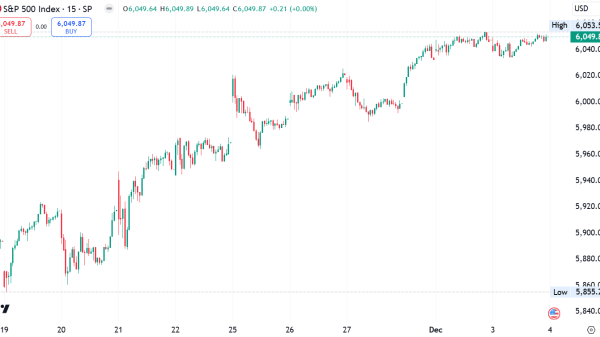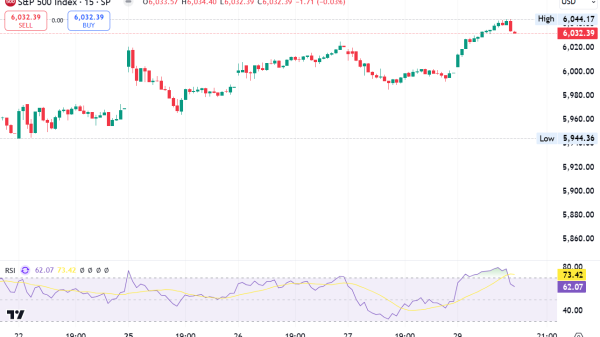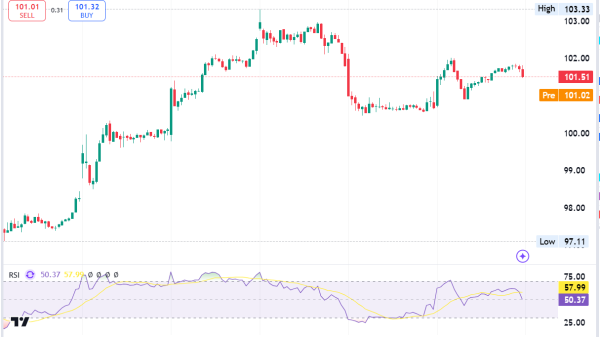The cryptocurrency market has proven itself resilient despite some big setbacks, and more investors are wondering if now is the time to invest.
What are cryptocurrencies?
Cryptocurrencies are digital currencies. While their units are sometimes referred to as coins, they differ from traditional currencies in many ways.
To name just a few, first, cryptocurrencies are never tangible and instead exist on a digital network that uses blockchain technology. Additionally, unlike fiat currency, they are not backed by any government authority or commodity such as central banks or gold. They can also be used around the world with no exchange rate as they don’t have borders, whereas travelers typically lose money exchanging their country’s fiat currency for one they can use at their destination.
Ultimately, all of the factors that make cryptocurrencies unique have also made them a controversial asset. To some, cryptocurrencies represent a breakaway from the traditional monetary systems that are liable to corruption and monopolization. To others, they are a risky and volatile investment.
How are cryptocurrencies made?
While you don’t need to have a perfect understanding of the tech behind crypto to invest in it or to use it, it doesn’t hurt to know the basics. The basis behind cryptocurrencies is blockchain technology. A blockchain is a secure and immutable record of transactions shared among many computer nodes within a network. Each block in a blockchain consists of data related to the transaction, including a unique line of encrypted data called a hash. The blocks are linked by cryptography to form a chain.
The process by which cryptocurrencies are made is called mining, which is also used to refer to the process of verifying transactions. Crypto mining uses expensive, high-end software and hardware to make guesses at solving a complicated algorithmic problem. The first person to solve it is rewarded with 6.25 Bitcoin and a new block in the chain is formed.
Mining makes cryptocurrencies extremely difficult to replicate or counterfeit because each block in the chain is unique and contains data from the previous block, and because every transaction must be verified by multiple nodes within the network. Verification of crypto transactions is done by computers, removing third-party fees and resulting in cheaper transactions.
The first block in a chain is called a genesis block. The genesis block of Bitcoin, the world’s first official cryptocurrency, was mined in 2009 by the individual or group of individuals who published the Bitcoin whitepaper under the pseudonym Satoshi Nakamoto. Although there are a few suspected candidates, Nakamoto’s true identity has never been confirmed.
When crypto was young, mining was simple enough that users could mine it using home computers, allowing them to earn their own coins. While this is still the case for some of the lesser-known crypto coins, mining the world’s leading cryptocurrencies now requires lots of computational power. For this reason, most mining is done in mining pools, often by companies with the resources at their disposal.
How many cryptocurrencies are there?
Currently, there are thousands of cryptocurrencies on the market, but Bitcoin is by far the more dominant. The price for 1 Bitcoin was about US$35,000 as of November 6, and its value has remained in the thousands since it gained mainstream popularity circa 2017. One of the reasons for Bitcoin’s success is simply that it has been around longer.
While Bitcoin was not the first attempt at establishing a digital currency, it was the first to gain public acceptance and popularity, and today most people automatically associate the term cryptocurrency with Bitcoin. There is safety in familiarity, and Bitcoin’s longevity has allowed it to gain a larger group of investors than some newly mined currencies.
The second most prevalent currency after Bitcoin is Ether, which is powered by the Ethereum platform. Ethereum is an open-source platform that harnessed the concept of smart contracts, and subsequently kicked off a wave of new cryptocurrencies. In 2022, Ethereum switched to the proof-of-stake model, which is less energy-intensive than Bitcoin’s proof-of-work model.
Other popular cryptocurrencies on the market today include Binance, Ripple, Tether, Solana, Litecoin, Cardano, Dogecoin, EOS.IO and Monero.
What drives the price of a cryptocurrency?
Cryptocurrencies are valued similarly to stocks in the sense that the price is driven up as demand increases. Demand varies depending on usefulness, utility, popularity, competition, regulation and mining.
However, another important factor that determines a cryptocurrency’s value is supply limitations. Unlike money, some cryptocurrencies have finite supplies and only increase by fixed increments, with more stringent parameters that specify when more crypto can be mined.
For example, there is a maximum of 21 million Bitcoins available to be mined, and 19 million of those have been mined at this time. After every 210,000 mining events (roughly four years or so), a Bitcoin halving event takes place. When Bitcoin was introduced, successfully solving a block rewarded 50 Bitcoin. Today, Bitcoin miners are rewarded at a rate of 6.25 Bitcoins per solved block, resulting in approximately 900 new coins being mined every day. The next one, which will reduce the reward to 3.125 Bitcoins, is expected to occur sometime in early or mid-2024.
This model helps curb inflation by lowering the reward rate for work done but increasing the value of the reward. In theory, if demand for Bitcoin remains the same, the price of Bitcoin will increase. The previous three halving events have followed this trajectory, with price increases seen six months to a year after a halving event.
How to invest in crypto?
Investors eager to invest in crypto assets may be overwhelmed by the number of choices out there. There are more cryptocurrencies now than ever before — 23,000 according to CoinMarketCap — with prices for one coin ranging from less than one cent to over US$35,000.
Bitcoin and Ether are the top two performers in the sector and both have very high market caps, volume and liquidity. Yet, they also have very high price points. As of November 6, one Bitcoin costs about US$35,000 and one Ether coin will set you back around US$1,890, although it’s worth noting that you can buy part of a coin rather than the whole thing.
Of course, many far cheaper options are also worth considering. For example, that same day Binance’s BNB cost around US$254 per coin, Solana’s SOL cost about US$41 and Avalanche’s AVAX cost US$13. All three options cost comparatively little, yet retain high market caps, volumes and liquidity.
So, with so many cryptocurrencies on the market, how can you tell which are trustworthy? Just like with choosing any stock, it’s important to do research into a crypto project before investing in it.
One area of knowledge that crypto investors should be well-versed in is a relatively new concept in economics dubbed “tokenomics.” Tokenomics encompasses many of the same aspects of traditional economics but includes some concepts unique to crypto like burning, DeFi incentives and the technical aspects that make crypto function.
Learning tokenomics will help investors evaluate different crypto options to help them decide which to invest in.
As for buying crypto outright, it can be risky and complicated, in part because the market is largely unregulated. Investors can either buy crypto on their own or with the help of a crypto brokerage firm or trading platform, and they will need a hot or cold digital wallet to store the coins. A hot wallet is stored on the internet and, thus, less secure. A cold wallet is more secure in that it doesn’t require an internet connection and instead uses a unique code, but there’s always the possibility that the code can become lost or forgotten. When buying through a broker, there may not be a choice as to what kind of wallet is used to store the coins.
For investors who would prefer to gain exposure to the crypto market without directly owning cryptocurrency, another point of entry is through purchasing a crypto ETF. ETFs are attractive options for investors because they don’t need to own the digital asset to benefit from its price action.
Like other ETFs, these can purchase these from a standard brokerage firm in a regulated market, and no crypto wallet is required. Currently, in the US, only crypto futures ETFs are available. Crypto futures are contracts to buy and sell the currency for a specific price point on a predetermined date. Some of the top performers include the VanEck Bitcoin Strategy ETF (BATS:XBTF), the Global X Blockchain & Bitcoin Strategy ETF (NASDAQ:BITS) and the Valkyrie Bitcoin and Ether Strategy ETF (NASDAQ:BTF), which tracks both Bitcoin and Ether future price projections.
While ETFs that track cryptocurrency spot prices are not yet approved in the US, they are available in some other markets, such as Canada’s TSX. For a list of Canadian cryptocurrency ETFs, click here.
Finally, investors can back companies that focus on mining cryptocurrencies. Marathon Digital Holdings (NASDAQ:MARA), Riot Platforms (NASDAQ:RIOT) and Bitfarms (NASDAQ:BITF, TSX:BITF) are just a few companiaes that mine crypto coins.
Crypto trends and outlook moving forward
The crypto market’s short history is full of upheavals. After a period of humongous growth, the market crashed hard in September 2018. A series of crypto exchange hacks, a lack of institutional support and predictions of the Bitcoin bubble bursting all contributed to crypto price losses of approximately 80 percent between January and September 2018, a more severe decline than the dot-com crash of 2000.
Cryptocurrencies experienced another period of explosive growth in 2020 due in part to the economic upheaval caused by the COVID-19 pandemic, and by 2021 there were new coins on the market and a slew of trading platforms profiting from crypto. By the end of that year, the crypto market was valued in the trillions of dollars, and Bitcoin was at its peak, valued at US$65,000 per coin.
However, this came crashing down throughout 2022 when a string of bankruptcies and fraud from industry leaders shook the already fragile foundation of trust in the industry. Scandals such as the collapses of FTX and Terraform Labs that, either knowingly or unknowingly, led to billions of dollars of investor funds being lost. These incidents prompted the Securities and Exchange Commission to call into question whether regulations should be placed on cryptocurrencies to protect investors.
Some early advocates of cryptocurrency see the implementation of regulation to be counterintuitive to having a decentralized currency system in place, but most experts agree that regulation will help stabilize the market and make investing in crypto safer and more beneficial.
Although crypto may be a far cry from where it was in its heyday, 2023 has been an exciting year, with the most resilient coins gaining some traction likely due to the ongoing conversation on regulation in the US and the possible introduction of spot Bitcoin ETFs to the market.
According to TradingView, Bitcoin and Ether had year-to-date increases of 111.98 percent and 58.43 percent, respectively, as of November 6. CoinDesk cites reduced volatility as one factor that may be contributing to crypto’s current rise.
One of the most talked about developments in the crypto market is the introduction of spot Bitcoin ETFs in the US. This is an exciting development that would offer exposure to crypto assets to an entirely new pool of investors.
Spot ETFs hold the digital assets themselves at the assets’ direct price, so, unlike with crypto futures ETFs, investors don’t need to “bet” on what a firm thinks a currency might be worth in the future. Several firms have been trying to achieve US approval for spot Bitcoin ETFs in recent years, but the SEC has denied or stalled every application to date.
However, analysts from JP Morgan and Galaxy Investment Partners agree that spot ETFs will likely be available very shortly. After the US SEC denied Grayscale Investments’ application to convert its Grayscale Bitcoin Trust (OTCQX:GBTC) into a spot Bitcoin ETF, the asset-managing firm filed a lawsuit against the SEC, stating it had no grounds to deny its application. A judge ruled that the SEC’s denial was without basis and ordered it to re-evaluate its position and provide substantial reasoning for its rejection.
“While (the deadline) suggest(s) that the 21Shares ETF has a higher chance of receiving approval first, it’s expected that the SEC won’t favor any issuer with a first-mover advantage,” he said. “Therefore, there’s an anticipation of a collective approval or rejection, likely occurring in early 2024 within the first ten days of January.”
How is the crypto market set to develop?
The crypto market is young, and its development is anyone’s guess. Currently only El Salvador accepts Bitcoin as legal tender, but more retailers have begun accepting it as a form of payment in various countries, including the US and Canada, as talks of regulation continue.
Based on the public’s eagerness for more accessibility to the crypto market, the current economic and political climate and the rapid expansion of tech into every other aspect of everyday life, crypto is likely only set to rise in popularity and value.
A worldwide agreement on cryptocurrencies may take decades, but federal regulations will aid in integrating digital currencies into normalcy, and enthusiasts like to speculate that it may even replace fiat currency someday.
The bottom line
Investing in cryptocurrency can be a complex decision. While the crypto market has had its ups and downs, it remains a fascinating and innovative field with the potential for significant growth. Understanding the history and current landscape of cryptocurrency, as well as keeping up with ongoing developments and regulations, can help investors make informed decisions about whether or not to invest in digital currencies.
Securities Disclosure: I, Meagen Seatter, hold no direct investment interest in any company mentioned in this article.


































